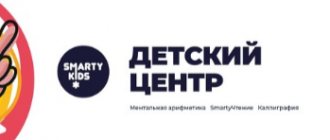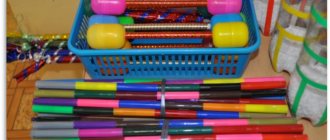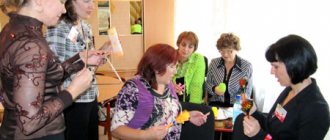Regular swimming lessons have a beneficial effect on the child’s body: they train the musculoskeletal system, strengthen the cardiovascular and respiratory systems, accelerate metabolic processes and improve immunity. Swimming is rightfully considered one of the easiest ways to raise a child healthy, strong and resilient. In addition, activities in water invariably evoke positive emotions in children and improve their mood. The main thing here is to choose a good pool for kids.
Let's try to figure out together where in Moscow to teach a child to swim and how to choose the right pool with a trainer for children.
When choosing a pool for small children under 3 years old, first of all, you should pay attention to indicators such as temperature and method of water purification, as well as the presence or absence of individual lessons in the pool with the child.
In addition to these indicators, we all want to find a children's pool "near me", and this is really important, because in the case of children, the time spent traveling there and back plays a significant role in the effectiveness of the activities. If the child was already tired on the way to the pool, then the training will be of little use. Therefore, when referring to our list of swimming pools for children in Moscow, do not forget to take into account the geographical principle - it will be different for everyone.
Club "Aquademia"
Aquademia is a club for swimming children from 2 months to 6 years old near the Shchukinskaya metro station. Two full-fledged swimming pools allow you to conduct classes in different formats: trainer + baby, trainer + couple (mother and baby) and small groups (up to 4 people). The club staff includes only professional instructors and hydro-rehabilitators with specialized education and necessarily experience working with infants.
Photos of the club "Aquademia"
Water quality is a special pride of Aquademia. The temperature is maintained at 31-33C, the water goes through a triple purification system and is completely renewed in 30-60 minutes.
The gaming Aquademia is worth special attention, so visiting the club should not be limited to time spent in the pool. Children enjoy exploring exciting toys and often stay in the club for more than an hour.
Aquademia is the territory of not only children's, but also parental happiness! Parents can participate in the lesson or watch their baby on the big screen while sitting in a comfortable seating area. The club administrators carefully offer tea, coffee and lemonade.
The founders of the club approached the formation of the concept of the pool with special trepidation and great soul. The design uses not only beautiful, but also environmentally friendly materials.
The club is located at st. Academician Bochvara 3, building 3. The cost of one group lesson is 1000 rubles, individual - from 1500. A subscription for 6 group lessons costs 4560 rubles.
Aqua club “Me and my baby”
Aqua is an excellent option for swimming at a very early age with a specialized pool for babies up to one year old in Moscow.
This pool is not accessible to everyone: only very young swimmers with their mothers and pregnant women practice here.
Children's classes are aimed at two age groups: from birth to 3 years and from 3 to 6 years.
Qualified instructors and teachers of the aquatic center conduct classes using unique proprietary methods. And these are not just swimming lessons in the pool for young children, but lessons using a comprehensive methodology for the physical, psycho-emotional and mental development of children. This means that in addition to swimming lessons, kids learn colors and shapes, poems and songs, and play a lot.
Training for children from 3 to 6 years old includes elements of “big” swimming, active educational games in the water and elements of hardening.
The water temperature in the pool is maintained at 32-33 degrees. The water passes through ultraviolet light and gentle hypochlorination is used. This cleaning system is suitable even for infants.
According to numerous reviews, it can be called one of the best swimming pools for children over one year old in Moscow.
The Aqua Center is located next to the Medvedkovo metro station at the address: st. Malygina, 1, building 2. Also, a branch of the aqua club operates in the Odintsovo district of the Moscow region, in the village of Zhukovka-1.
The cost of a one-time visit to the pool is 1,400 rubles, with a subscription it is more profitable - from 4,700 rubles for 5 lessons of 1.5 hours.
The benefits of swimming for preschoolers
Swimming is a beautiful and useful sport that undoubtedly has a positive effect on the entire human body.
Swimming helps:
- stimulation of cardiac activity;
- improving blood circulation;
- relaxation of the nervous system;
- strengthening the respiratory system;
- strengthening the spine and developing correct posture;
- general improvement in well-being.
Water benefits not only physical health, but also psychological well-being. It helps relieve nervous tension, anxiety, negativity, and copes well with irritability. Regular games in the water always bring children joy and create a good mood, active movements help them feel more confident and beautiful, and the very first successes give them a strong sense of pride and self-satisfaction.
Another advantage of swimming for parents is that even a small child can be taught this sport. By swimming, the baby will get stronger faster and learn to use his body.
Early swimming studio "Aquaclass"
The early swimming studio "Aquaclass" also conducts children's classes in the pool.
The school is proud of its full compliance with international standards and the use of the latest water treatment technologies. This is definitely a worthy choice of swimming section for children from one year old in Moscow. Before starting to work with children, instructors here undergo strict selection and training using the author’s methodology. During classes, they have to completely replace their parents, who always remain on land.
From 0 to 2 years old, the center offers children to try the “Early Start” program, which helps the child get acquainted with water and get used to the new world.
At 2 years of age, the toddler pool opens the “First Mile” course, which helps them feel like a fish in water and get an idea of different swimming styles.
Swimming for children from 4 years old in Aquaclass takes place according to the Champion's Path program, which prepares the child for school stress and helps in the future to become a champion in any sport.
A bright play area organized in the center makes swimming for children from 1 year old even more entertaining and interesting.
The water temperature in the pool is 31-33 degrees. An innovative multi-stage purification system is used with monitoring of water samples every four hours.
The cost of a one-time individual lesson with a trainer is 1950 rubles (first visit - 950 rubles). When purchasing a subscription, the price is reduced.
The aquatic center has several branches in Moscow; addresses can be found on the website.
What do you need for swimming lessons?
For classes in the swimming section, parents will be asked to prepare:
- swimming trunks for boys or swimsuit for girls;
- rubber cap for the pool;
- rubber slippers for walking from the locker room to the pool;
- goggles to protect eyes from water;
- soap, washcloth, towel (you must take a shower before and after the pool).
Some inventory differs slightly in different sections. When registering for the pool, the trainer will definitely tell you what swimming accessories you need to buy for your baby.
Early Development Center "Dolphin"
The Dolfinok Early Development Center also organizes swimming lessons for children from 3 years old and even earlier. It is equipped with a modern children's health pool with sea water, which is extracted from the depths of the Earth through its own well and is ideally suited for children's development. In addition, sea water strengthens the immune system and helps the body, which has not yet become stronger, fight pathogens of various diseases.
Highly qualified Dolfinenok trainers conduct classes with children from birth to 4 years old, as well as with pregnant women. Clients can use the service of an infant swimming specialist visiting their home to train parents.
The water temperature in the center's pools is 30-32 degrees. The water is disinfected with ultraviolet light and passes through a sand filter or computer purification system, depending on the branch.
After classes, children are offered to warm up in a classic or phytosauna.
A branch of the center with swimming pools is located near the Medvedkovo metro station at the address: st. Taezhnaya, 1, Sanatorium “Svetlana”. The second branch is next to the Belorusskaya metro station at the address: st. Skakovaya, 5. There is also a branch of the health center in the city of Mytishchi, Moscow region.
The cost of a one-time visit to the pool is 1200-1400 rubles, a subscription for 5 classes is approximately 4500-5500 rubles, depending on the specific pool. Individual lessons for children with an instructor are calculated separately.
Family
“Magic Child” is a family center for the harmonious development of a person from birth. Physical health is the most important component of full development. Therefore, the center pays great attention to classes for children in the pool with an instructor.
Children aged from two months to 4 years are invited to classes together with their parents. The first part of the lesson is group: the instructor shows general exercises for everyone, then individual work with everyone.
The center’s specialists promise to teach a child the basics of swimming movements in just a month, help him get rid of his fear of water and begin to dive into the water with ease.
The water is purified by ozonation and chlorination. The water temperature in the pool is maintained at 30-35 degrees.
Training takes place in the Harmony swimming pool near the Troparevo, Konkovo or Belyaevo metro stations at the address: st. Samora Machela, 6, building 4.
The cost of a one-time visit is 1100 rubles, when purchasing a subscription - 800 rubles.
How to overcome your fear of water
It often happens that children are very afraid of water. In such cases, not only swimming in the pool becomes a problem, but also banal bath procedures. You need to get rid of this as early as possible.
Child in a cap in the pool
There are several ways:
- It is worth choosing a moment when the child is in a good mood. Take the baby in your arms and slowly lower him into water at a comfortable temperature. In this case, you need to talk to him. Demonstrate in every possible way that the adult is not bothered by what is happening now. Take a bright toy and let him swim with it. You should not expect immediate results, but over time the child will be able to safely tolerate bathing. He even loves water.
- Many parents, seeing that their child is afraid to swim, take a bath with him. There's nothing wrong with that. Children feel confident around their parents. Innovations are more easily accepted, again, toys. Distracted by them, the baby loses sight of the fact that he is in a wet space. Obviously does not feel any discomfort from the water.
- If the sight of water causes hysterics, it is better to use the gradual habituation method. Start bathing in the basin. Wet your eyes and head while playing. When bathing is no longer accompanied by hysterics, you can move on to the bath.
- The brain of a small child is designed in such a way that all events quickly disappear from memory. Based on this, any fright during swimming (swallowed water, fell sharply into the water) can be smoothed out by taking a break from swimming for several days. Unpleasant memories will go away, and the baby will happily splash around in the bath again. If the child continues to cry, you should change the bathing location. For example, take the baby bath to another room.
- It happens that a child tolerated water well, but as a result of circumstances began to be afraid to dive into it. Here you need to start drawing some water into the bath. Gradually add and use distractions (bath foam, wind-up water toys). The desire to play will dull the fear, and soon the bathing process will improve.
A complex of sleep-awakening gymnastics for the middle group of preschool educational institutions
Note! Until a child overcomes his fear of water, there can be no talk of learning to swim.
BrightFamily Family Positive Lifestyle Center
When choosing a pool for babies under one year old in Moscow, you should familiarize yourself with the Brightlight early swimming program, which is known for its gentle approach to the baby and patented effective techniques. This system is practiced at the BrightFamily family center for positive lifestyle.
The center's instructors focus on establishing and strengthening a strong emotional bond between parent and child in the aquatic environment. This connection is achieved with the help of special techniques, mastery of which helps you learn to easily stay in the water.
Brightlight specialists, based on many years of international experience, claim that children who have mastered this technique are more developed physically, intellectually and emotionally and, accordingly, are more successful in life.
This system involves classes for children aged 1.5 months and older together with their parents. There is a specialized pool for them with a water temperature of 32 degrees.
The BrightFamily Center is located near the Polyanka or Tretyakovskaya metro stations at the address: Staromonetny lane. 18.
The cost of a one-time group lesson is 1,400 rubles, and an individual training session with an instructor is 2,500 rubles.
How not to teach your child to swim
Before teaching your child to swim, you should clearly know the methods that should not be used. This will speed up the learning process and avoid sad consequences.
Common mistakes made by parents include:
- extreme methods. For example, an extreme option is to throw a child into water against his will. Parents using this method expect that the child, sensing danger, will magically instantly learn to swim. Such actions can lead to the development of aquaphobia in a child - a panicky fear of bathing, entering water and swimming;
- forcing children to learn to swim. If a child does not want to learn at the moment, you should not force him either through actions or persuasion. Learning to swim will be successful only when the child is psychologically ready for it. When this happens, the child himself will ask you to teach him to float on the water;
Swimming should bring positive emotions to the child, and not be a forced activity.
- teaching a child to swim if he has contraindications: acute inflammatory diseases;
- high body temperature;
- symptoms of body intoxication: nausea, vomiting, diarrhea;
- bronchial asthma in the acute stage;
- skin infections;
- skin rashes of allergic origin;
- renal or heart failure;
- joint dislocations;
A swimming board is a useful device with which a child will quickly learn to float on the water.
When a person swims “like a dog,” the cervical spine is overloaded, which can lead to the development of scoliosis, osteochondrosis and other orthopedic diseases.
Splash Swimming School
Splash Swimming School provides swimming lessons for children from 3 years of age and for adults of any age. Experienced instructors conduct group and personal lessons, guaranteeing a special approach to each student, taking into account his physical and physiological characteristics.
The cost of an individual lesson in swimming lessons from 3 years of age is 1,300 rubles. A subscription for 8 group classes will cost 5,200 rubles.
Branches of the swimming school for children from 3 years old are located near the Botanical Garden metro station at the address: st. Wilhelm Pika, 4/12, near the VDNH metro station at the address: st. Kasatkina, 23 and a small swimming pool - next to the Otradnoe metro station on Kargopolskaya street 15, building 1.
Children's aqua
The new children's aqua also offers swimming lessons for children in Moscow.
Teaching swimming to children over 3 years old in a pool without parents is especially popular because it is from this age that children are able to study in groups with a coach, hear his commands and perform exercises independently. The pool also offers individual lessons with an instructor.
Children's training includes a large number of playful elements, while older children practice in a more serious manner, learning different swimming styles and practicing breathing exercises.
“Octopussy” also practices infant swimming using the Brightlight method, which helps mother and baby experience complete unity with the aquatic environment and with each other, which is very important at such an early age.
The water temperature in the pool is 33 degrees. Water is disinfected by ultraviolet light with ozonation and moderate chlorination, which is considered one of the most modern cleaning methods.
Children's pool from 3 years old "Osminozhka" is suitable for residents of the Eastern Administrative District, as it is located next to the Shchelkovskaya metro station at the address: st. 16th Parkovaya, no. 51.
The cost of a subscription for 8 classes is 6,400 rubles (800 rubles per class). The same subscription, but with individual training, will cost 12,000 rubles (1,500 rubles per lesson).
What swimming styles can a child master?
The most suitable swimming style for a beginner swimmer is crawl. Swimming styles such as breaststroke and butterfly are difficult to perform and are not suitable for learning to swim. Crawl swimming consists of alternating wide strokes with the arms along the axis of the body and alternately raising and lowering the legs. You can swim the crawl either on your chest or on your back.
Crawl is the most suitable style for learning to swim.
It’s easier to start teaching your child the crawl with easier techniques:
- The leg movements are the same as when swimming front crawl. The starting position of the arms is extended forward. Straight arms simultaneously make a downward stroke, reach the level of the hips, bend at the elbows and return to the starting position with the hands forward under the chest. And also the arms can work in a different way: straight arms simultaneously reach the hips through the sides, then bend at the elbows and return to the starting position;
- The legs move in the same way as when swimming backstroke. The starting position of the arms is extended along the body. The arms are bent at the elbows along the body, extended behind the head so that the palms are turned outward, and return to the starting position through the sides.
Lightweight front crawl swimming techniques involve simultaneously moving your arms
It is very important that the adult who will teach the child is good at one or another swimming style. After all, it is impossible to teach someone else what you cannot do yourself.
Sea water pool "Atlant"
If you have been looking for a pool in Moscow since the age of 4, pay attention to aqua with sea water. Swimming lessons are offered here for children from 4 years old up to adulthood.
The pool employs five experienced specialists who work with children of different age categories (from 4 to 18 years old).
The pool is proud of its unique sea water, which has a positive effect on the circulatory system and fights many diseases.
The water temperature in the pool is 28 degrees. Water undergoes regular purification based on electrolysis.
The cost of a group lesson in the pool for children from 4 years old is 850 rubles.
An individual lesson for a child will cost 1,300 rubles.
The Atlant pool is located next to the Volgogradsky Prospekt metro station at the address: st. Talalikhina, 28.
Registration for classes for young children and expectant mothers under the “Children of Love” program has also opened at the Atlant swimming pool. Children's groups in the pool are divided by age:
- from 1.5 months to a year,
- from 1 to 2 years,
- from 2 to 3 years,
- from 3 to 6 years.
Experienced instructors offer children a set of exercises, including adaptation to water and the basics of swimming, including underwater swimming. There are hardening elements, after which you can warm up properly in the Finnish sauna.
The division into age groups is not accidental. It involves the use of different teaching methods depending on the age and abilities of the child. Thus, experts are sure that teaching swimming to children from 3 years of age has significant differences from infant swimming.
The cost of a one-time group lesson under the “Children of Love” program is 1,400 rubles (1,200 rubles when purchasing a subscription). The price for an individual lesson (adult plus child) is 2500 rubles and 2000 rubles for a subscription.
Methods of teaching children to swim[edit | edit code]
Source: “Theory and methodology of teaching swimming.” Editor
: A.A.
Litvinov Ed.
: Academy, 2014.
When organizing and conducting initial training for children in competitive swimming, it is always necessary to take into account the anatomical, physiological and psychological characteristics of the child’s body. The methodology for initial training in sports swimming for adults and children does not have any fundamental differences. But despite this, a swimming teacher working with children must use methodological techniques in accordance with the age characteristics and capabilities of the children.
The method of showing and explaining is especially widely used when teaching children to swim. In classes with young children, the demonstration should be accompanied by a popular and figurative explanation. When working with middle-aged and older children, you need to explain more fully and deeply, using photographs and other visual aids. It is important to keep in mind that children are very sensitive to display. Therefore, the display must be accurate and highly qualified. The quality of mastery of sports swimming techniques and the sports future of students largely depend on the quality of the demonstration.
The exercise method is also used in classes with children of all ages. To teach children to swim, the method of separate and holistic study of swimming techniques is also used, however, the number of repetitions for younger children should be less, since they need longer and more frequent pauses for rest. At the same time, it is necessary to offer various options for exercises, since monotonous exercises tire the children’s psyche, their interest in them weakens, which leads to sloppy execution.
Middle-aged and older children can successfully perform most educational swimming exercises without support equipment, while younger children in the initial stage of learning can perform most exercises only with the help of support equipment or with the support and direct assistance of a teacher. During exercises, children should not be allowed to perform their swimming technique sloppy or incorrectly. After children have mastered the swimming technique in a general, rough form, it is necessary to daily improve and hone each swimming movement during the exercise.
Children aged 5-6 years, as a rule, do not know how to swim, and many of them cannot decide to enter the water on their own, much less perform even a simple exercise. When trying to swim independently on rubber swimming rings, they begin to use movements with their legs and arms similar to movements when walking, while raising their heads high above the water. As a result of this, the legs are deeply immersed in the water, the body takes on an almost vertical position, and movement in the water becomes almost impossible.
Children of preschool age poorly reproduce the movements shown to them in the water and poorly understand verbal explanations. They perform exercises or individual swimming movements with great difficulty. During this period of training, they especially need the direct help and moral support of the teacher. Therefore, until children learn to independently and confidently enter the water and perform swimming exercises, teachers should be especially careful. They should encourage them with their immediate presence and help them perform the correct swimming movements with their legs and arms. In this case, it is advisable that the teacher be in the water with the children.
Before starting to study the technique of sports swimming, it is necessary to apply a set of special preparatory exercises aimed at mastering the water.
These exercises differ significantly from the preparatory exercises performed during the initial training of adults and middle-aged and older children. Preparatory exercises for mastering with water for preschool children are performed in a certain sequence.
1. Immerse the child in water (first up to the chest, then up to the shoulder girdle and then with the head), holding him in your arms and plunging into the water with him. In this case, it is necessary to teach the child to hold his breath while inhaling while diving under water.
2. Do the same, holding the child with your hands, but without plunging into the water.
3. Swim breaststroke on your chest or walk along the bottom, immersed up to your neck in water, with a child holding onto the teacher’s shoulders and standing behind him.
4. Swim on your back or walk along the bottom, immersed up to your neck in water, with the child lying on your chest, holding his hands, and with him lying on his back, holding him by the armpits or supporting him by the head.
5. Teach children to accept and maintain a horizontal position (on the chest and on the back) with the help of a teacher who supports them: under the back and stomach; by the hands pressed to the body; behind the body in the lumbar region; by the underpants, in different positions of the arms: a) pressed to the body, b) extended forward, c) one arm is extended forward, the other is pressed to the body, d) palms are pressed to the back of the head, elbows are turned to the sides (only in the position on the back).
These exercises are performed first on the spot, and then with the teacher moving along the bottom.
6. Teach children to maintain a horizontal position on the water (on the chest and on the back, with different positions of the arms) while sliding from one teacher to another, from the teacher to the side and from the side to the teacher, using the sliding speed reported by the teacher (light pushing) or received by a child pushing off the side with his feet. Exercises are performed with a gradual increase in the distance between teachers and the teacher and the side of the pool.
Exercises 3, 4, 5 and 6 are carried out first without movements, and then with crawl leg movements on the chest and on the back, which are studied in the process of mastering the preparatory exercises. Exercises 5 and 6 are performed in the chest position with holding your breath while inhaling, and in the supine position with voluntary breathing.
Young children should first be taught the crawl style on their back, since when swimming on their front they cannot quickly master rhythmic breathing. When swimming on your back in the initial stage of training, some disturbances in the breathing rhythm are quite acceptable.
The technique of swimming movements and their coordination should be studied in the following sequence:
- study of leg movements in the crawl style on the front and on the back, with supports at the side, and in sliding with the help of teachers and independently;
- swimming movements with the legs when performing exercises 3 and 4 from the preparatory series;
- the same when performing exercise 5 from the preparatory series;
- the same when performing exercise 6 from the preparatory series;
- the same, holding with your hands the stick with which the teacher walks along the side of the pool (the stick pressed to the body can be held under the armpit);
- the same, gliding across the pool, accompanied by a teacher walking nearby along the bottom of the pool;
- swimming across and along the pool on the back using the legs, with different positions of the arms, accompanied by a teacher swimming next to the child;
- the same, accompanied by a teacher walking along the board and insuring the child with a stick, which, if necessary, the child can grab with his hand and restore a stable position and continue to swim;
- the same, accompanied by a teacher walking along the board without a safety pole. From time to time, the teacher gives the child the necessary instructions by voice and gestures, all the time encouraging and encouraging him to swim the entire pool without stopping;
- the same, under the supervision of a teacher standing in the place from where the child began to swim;
- group swimming across and along the pool on the back with the help of legs (with different positions of the arms) under the supervision and guidance of teachers located on the sides of the pool, giving children the necessary instructions aimed at maintaining the correct body position in the water and the correct execution of swimming movements with legs and breathing .
When children learn to confidently swim on their back by performing swimming movements with their legs, in different positions of their arms, they should move on to studying swimming movements with their arms and coordinating them with movements of their legs and breathing in the following sequence:
- studying swimming movements with the hands with the support and assistance of a teacher walking along the bottom of the pool on the side or in front of the child, swimming on his back due to the movements of his legs. The teacher takes one or both hands of the child at the elbow joints and helps him perform hand movements;
- swimming on your back across the pool, accompanied by a teacher walking along the bottom of the pool next to the child and showing him how to move his arms and how to inhale and exhale;
- swimming on your back along the pool with the help of a teacher swimming next to the child;
- the same, accompanied by a teacher walking along the side of the pool (with or without a safety stick) and showing the child hand movements and their coordination with breathing;
- group swimming on the back across and along the pool under the supervision and guidance of teachers who are on the sides of the pool and show children hand movements and their coordination with breathing.
The following exercises are done:
- with separate performance of the swimming movement separately by each hand and stopping it in its original position, the other hand is pressed to the body or extended forward;
- with separate execution of alternating alternations of swimming movements with the arms (while moving one arm and stopping it in its original position (extended in front), a full movement is made with the other arm), etc.;
- with simultaneous movements of the arms, stopping them in their original position (one arm is extended forward, the other along the body), i.e. while one hand makes a rowing movement, the other moves above the water.
After children learn to easily swim the length of the pool on their back, maintaining the correct body position and correctly performing swimming movements with their legs and arms in coordination with breathing, it is necessary to periodically include in the lesson exercises for mastering non-stop swimming, gradually increasing the distance (up to 200 m), etc. to master the skills of high-speed swimming of short segments without taking into account time with an assessment of swimming technique.
After children learn to swim easily and confidently on their back, they should move on to learning the front crawl method, performing the appropriate exercises in the same sequence. The lesson also includes exercises aimed at studying breathing, coordinating breathing with the movements of the legs and arms, coordinating the movements of the arms and legs with holding the breath, and coordinating the movements of the arms, legs and breathing.
After mastering the technique of backstroke and chest crawl swimming, the technique of breaststroke swimming is studied, and then butterfly.
In a special shallow children's swimming pool or on a children's beach with a flat, shallow bottom, children of preschool and primary school age are taught in the same sequence. Children perform many exercises independently under the guidance and supervision of a teacher. The water temperature in a winter pool should be 27 - 29 ° C and 23 - 26 * C in an open reservoir in sunny weather.
The process of learning to swim includes dismounts and jumps with your feet into the water, as well as falls head first from the side and the starting block.
- Jump into the water towards the teacher standing at the bottom. who picks up the child, dips him in the water, and then pushes him to the side.
- The same thing, but the teacher picks up the child after he dives into the water.
- The same applies to belaying by a teacher, but the child himself gets out of the water and swims to the side.
- The same thing happens when the teacher stands on the side with a safety stick.
First, the exercises are done with a rubber swimming belt, and then without it.
Falls into the water head first are performed in the following sequence:
- from a sitting position on board, resting your feet on the foam trough. The torso is tilted forward completely. Hands clasped above head;
- from a deep squat position, grabbing the edge of the side with your toes. The torso is tilted forward. Hands clasped above head;
- the same, from a forward leaning position. The torso is tilted forward to a horizontal position. The legs are straight, the arms are closed over the annual;
- the same, from a bent position. The torso is tilted forward and downwards. The arms are lowered down and the palms touch the ankle joints.
After successfully mastering the listed drops, you can move on to learning the starting jump, first from the side, and then from the starting platform.
Teaching turns is carried out with the direct assistance of a teacher who is in the water, demonstrates the turn to the children and helps them perform it.
Training in diving to retrieve objects from the bottom of a shallow pool also takes place with the direct assistance of a teacher who is in the water, showing children how to dive, find and retrieve objects from the bottom. Helps them master this skill by first diving with each child, and then watching them take turns diving without his help.
The process of teaching swimming to children aged 7–K) is basically similar to the process of teaching middle-aged and older children and adults. However, in the first stage of training, when conducting general preparatory exercises for mastering the water and learning the technique of leg movements, teachers must be in the water to show and help children perform the exercises being studied, as well as support and secure them.
The use of a playful form of conducting lessons with various kinds of games and entertainment in each lesson on land and in water creates a cheerful atmosphere, increases the emotional state of children and causes them increased interest in subsequent lessons in the pool.
The teacher must mobilize all his experience, ingenuity and ingenuity in order to organize and conduct feasible and accessible games and entertainment in the water (with and without the use of support devices), various kinds of round dances and movements in the water, and games with balls from the very first lessons with the kids. and toys, games of tag, etc.
At the initial stages of learning, games are used with children that include an element of competition, which are carried out based on the material of preparatory exercises for mastering with water. Subsequently, plot-shaped games are used, which require preliminary clarification on land. Games have a fruitful effect on children’s successful acquisition of the ability to swim.
State Budgetary Institution "Moscow Olympic Aquatics Center"
Parents of future champions should pay attention to the Moscow Olympic Aquatics Center, where there is a swimming section for children from 3 years old.
Classes are held in groups of 6-7 people and last 30-45 minutes. According to instructors and methodologists, this is the most effective system for teaching swimming to children from 3 years old in Moscow.
The water temperature in the training pools is 32 degrees.
A group of children aged 7 to 14 years study for 45 minutes at a water temperature of 27-28 degrees.
Classes for children are held at the Swimming House near the Izmailovo, Semenovskaya or Partizanskaya metro stations at the address: st. Ibragimova, 32.
The cost of a one-time visit is from 350 rubles, when purchasing a subscription – from 310 rubles.
At what age should you start teaching your child to swim?
For the little ones there is infant swimming. Such activities will bring a healing effect and teach kids not to be afraid of water.
But most swimming sections accept those from 3-4 years old. According to teachers and psychologists, children who have reached this age are most ready to learn to swim and interact with water. At this age, children already have sufficiently developed thinking and coordination of movements. Very young children simply will not be able to understand or follow the basic rules of swimming.
In order to give beginners due attention and ensure the necessary safety in the water, preschoolers are most often taught to swim individually or in small groups (up to 5 people).
At the age of 3-6 years, children learn the basics of swimming, learn the properties of the aquatic environment, and master ways to hold the body in horizontal and vertical positions. Upon reaching 6 years of age, children learn to lie down and float on their backs.
Their parents must be present at preschoolers' lessons in the pool.
From 6-7 years old, a child is ready to master swimming styles - breaststroke, crawl. If at this age a preschooler is just starting to exercise, the coach will first teach him to hold his body on the water, relax, and correctly coordinate the movements of his arms and legs.
It is possible to teach children to swim professionally starting from the age of 7. At this age, children are already showing effective results and have the necessary abilities and physical indicators.
Family wellness
The family recreation center conducts water activities for different age groups. And the presence of several branches of the center will definitely help answer the question: where to send your child to the pool.
“Second Birth” conducts:
- infant swimming for babies with mothers or fathers for the age group from 1.5 months to 1 year,
- classes in the children's pool from 1 year to 2 years - they are also held together with parents,
- classes in the pool for children from 2 years old - in Moscow and the Moscow region,
- swimming section for children from 4 years old in several branches of the center,
- training in the pool for children from 6 years old in Moscow and the Moscow region.
According to the rules of the pool, the section for children of the third and fourth age groups works in such a way that parents can be in the water with the child or wait for him on land at their discretion.
The cost of a one-time visit to the pool is from 750 rubles, when purchasing a subscription - from 600 rubles. The final price depends on the specific branch.
Branches of the health center operate in several districts of Moscow at the following addresses: st. Larch alley, 12 B (Petrovsko-Razumovskaya metro station), st. Kosinskaya, 12B (metro station Vykhino), st. Bolshaya Filevskaya, 18 (metro station Bagrationovskaya), st. Rabochaya, 53 (metro station Ploshchad Ilyicha) and in the Moscow region (Khimki, Dolgoprudny).
Medical examination before swimming
Before sending your child to the section, you will definitely need to consult with a pediatrician and obtain a certificate of admission to the pool.
Medical contraindications may include:
- skin diseases that pose a danger to other children (eczema, scabies, fungus, dermatitis, furunculosis);
- presence of signs of an infectious disease (fever, runny nose, cough, sore throat);
- cardiovascular diseases (for example, heart disease);
- lung diseases (tuberculosis, bronchitis, asthma, pneumonia);
- chronic and acute diseases (kidney disease, epilepsy, seizure syndrome, syphilis, oncology and others).
Sports and fitness complex "Chaika"
When choosing a section in the pool for children over 5 years old, pay attention to the Chaika sports and fitness complex.
"Chaika" is famous for one of the best open-air swimming pools in Moscow. Children up to 18 years of age are taught swimming here. Depending on the age, the child falls into the group of “babies”, “frogs”, “fish” or “dolphins”.
The pool also provides the opportunity to take personal training with an instructor.
The water temperature in the pool is maintained at 28 degrees throughout the year. Highly effective modern methods of water purification are used.
The cost of a subscription for group swimming in Moscow from 3 years old is 3,300 rubles (6 lessons). Each individual lesson for a child with a teacher will cost 1,500 rubles.
The Chaika pool is located near the Park Kultury metro station at the address: Turchaninov lane, 3, building 1.
What to do if your child refuses to go swimming
The benefits of swimming for children are undeniable, but often enough when faced with difficulties during training, children begin to refuse to attend the section. In this situation, parents need to assess the situation according to several criteria:
Ask your child about the reasons for not wanting to attend the selected section.
Depending on the child’s answer, there are several options:
- I don't like the coach and his teaching style. In such a situation, you need to clarify what exactly the child does not like about the coach. Perhaps the section leader demands too much from the child or does not explain it clearly enough. In this situation, you can go up and talk directly with the coach about his view of the current situation, if after that the situation does not change, you can find another specialist.
- Difficulty performing the proposed load. Talk to the trainer, ask that the training program be revised for the time being for your baby.
- Misunderstanding with the guys in the group. In children's groups, sometimes there are clashes and ridicule; if your baby refuses to go because of difficulties in communicating with other children, talk to the coach so that he can use pedagogical technologies and talk with the parents of other children.
In any case, before refusing to visit the pool, you need to talk with the coach, find out his opinion about your child’s abilities and capabilities, and hear his professional opinion about the current situation. Children, especially younger schoolchildren, cannot always clearly explain the reason for their reluctance to attend the section. If you do not find the reason for this reluctance, then there is a possibility that the same problems will appear in another circle or section. The first step to regaining the desire to take extra classes is to find the reason for the rejection.
Offer to try another sport
Swimming is a good form of exercise, but not all children enjoy going to the pool. Each baby is individual, and perhaps another sport will be more desirable for your baby. This option is suitable for you if the child, being on good terms with the coach and children, performs all the proposed loads easily, does not feel the desire to go to training, and enthusiastically talks about other activities.
"Branch of MPO named after I. Rumyantsev"
If you want to enroll your child in the pool as an adult, a worthy option is the “Branch of the I. Rumyantsev MPO.” The sports complex has been operating for more than forty years, and is constantly updated and meets all modern requirements. Experienced trainers teach swimming here to children from 7 years old and adults of all ages. This sports complex with a swimming pool is ideal for activities with children 10 years and older. In the children's and adult pools of the complex, the water temperature is maintained at 26-27 degrees.
The sports complex is located near the Savelovskaya metro station at the address: st. Pistsovaya, 12.
The cost of an individual lesson with an instructor is 1,650 rubles; if you purchase a subscription, it is more profitable.
We hope our selection will help you find a good children's pool in your area and raise, if not a world champion swimmer, then certainly a healthy and happy child.
Previously, we compiled a rating of the best children's quests in Moscow and told where to celebrate a child's birthday.
Cover: magichild.ru
- share with your friends!









